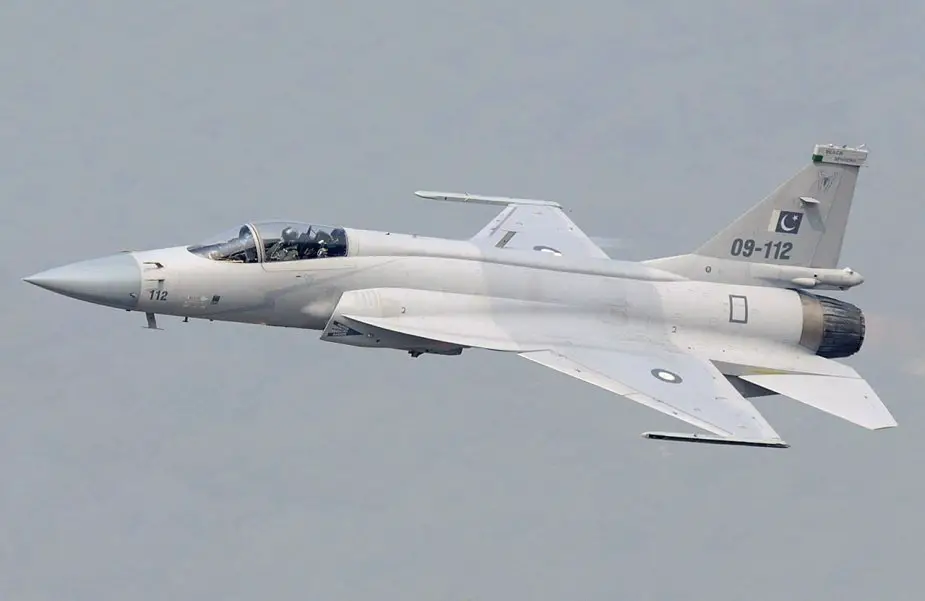China has ramped up production of JF-17 fighter jet, which was jointly developed with Pakistan. In the first half of 2020, the number of aircraft delivered was the most in the past five years, according to industry reports echoed by Global Times.
Follow Air Recognition on Google News at this link

JF-17 Thunder of the Pakistan Air Force (Picture source: Wikimedia/Shimin Gu)
As of June 30, 2020, the production line of the JF-17 has on average shortened the production period of a single aircraft by 15 days compared to last year, China Aviation News, a newspaper affiliated with the state-owned Aviation Industry Corporation of China (AVIC), reported last week. The Pakistani Air Force is the main operator of JF-17 fighter jets. Nigeria and Myanmar also operate the Chinese-Pakistani made fighter jets.
The latest, powered-up version of the JF-17, known as the JF-17 Block 3, made its maiden flight in December 2019, the Aerospace Knowledge magazine reported then. In March 2019, Yang Wei, chief designer of the China-Pakistan co-developed fighter jet, said development and production of the JF-17 Block 3 was underway, and the third block will see the JF-17's information-based warfare capability and weapons upgraded.
The PAC JF-17 Thunder, or CAC FC-1 Xiaolong (Fierce Dragon), is a lightweight, single-engine, multi-role combat aircraft developed jointly by the Pakistan Aeronautical Complex (PAC) and the Chengdu Aircraft Corporation (CAC) of China. It was designed to replace the A-5C, F-7P/PG, Mirage III, and Mirage V combat aircraft in the Pakistan Air Force. The JF-17 can be used for multiple roles, including interception, ground attack, anti-ship, and aerial reconnaissance. Its designation "JF-17" by Pakistan is short for "Joint Fighter-17", while the designation and name "FC-1 Xiaolong" by China means "Fighter China-1 Fierce Dragon".
The JF-17 can deploy diverse ordnance, including air-to-air and air-to-surface missiles, and a 23 mm GSh-23-2 twin-barrel autocannon. Powered by a Guizhou WS-13 or Klimov RD-93 afterburning turbofan, it has a top speed of Mach 1.6. The JF-17 becomes the backbone of the Pakistan Air Force (PAF), complementing the General Dynamics F-16 Fighting Falcon at half the cost. The PAF inducted its first JF-17 squadron in February 2010. In 2015 Pakistan produced 16 JF-17s. As of 2016, Pakistan was believed to have the capacity to produce 25 JF-17 per year. 58% of the airframe is Pakistani and 42% Chinese/Russian-origin. As of December 2016, Pakistan Aeronautical Complex had manufactured 70 jets in the country for use by the Pakistan Air Force of the Block 1 type, and 33 jets of the Block 2 type.
The Pakistan Air Force planned, by 2017, to induct a twin-seater version known as the JF-17B for both enhanced operational capability and training. The more advanced and technologically sophisticated block 3 version of the aircraft is underway. Its AESA radar, KJ-7A, has been developed; it can track 15 targets and engage 4 targets simultaneously.
















